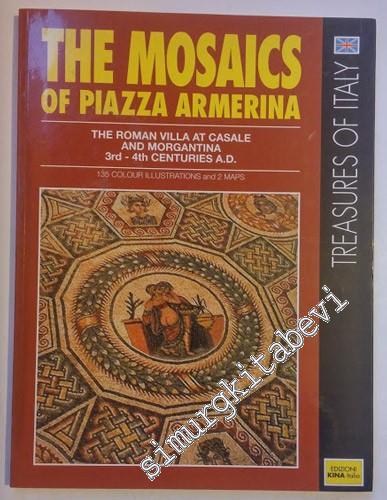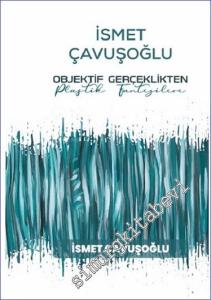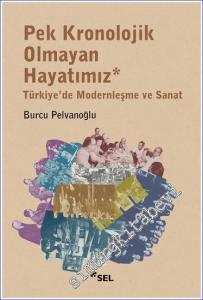#smrgSAHAF The Mosaics of Piazza Armerina: The Roman Villa at Casale and Morgantina 3rd - 4th Centuries A.D. -

Piazza Armerina, the Roman villa at Casale and Morgantina are set amid the lush countryside of Enna Province; each one of the three holds its own important place in the history of Sicily and Italy, and together they form a triangle of great archaeological, artistic and cultural importance.
The Roman villa at Casale was built as a hunting lodge for Maximian Herculius and his family between the 3rd and 4th centuries A.D. Maximian shared with Valerius Diocletian the title of Emperor Augustus of the Roman Empire (which he received in 286 AD), with command over the Western part of the Empire. The special form of government under which they ruled was the Tetrarchy, which comprised two Emperors and two Caesars who were supposed to succeed them after 20 years (Galerius was Diocletian's Caesar, and Constantius Chlorus, succeeded on his death by his son Constantine, was Maximian's). Maximian was forced first to abdicate and then to flee to Gaul in the difficult period of Constantine's rise to power, and committed suicide in 310 AD. after being accused of treason.
The construction of the villa, which partly stands on the site of an earlier building, presumably began after 293 AD; Maximian very probably established his residence there some 10 years later, after his abdication. The luxurious mansion continued to be used after Maximian's death, as demonstrated by traces of successive rebuilding work on the structure dating from the 6th-7th centuries. When the Arabs invaded Sicily the villa was abandoned, but around the year 1000 it was inhabited again for a period, this time by the Normans, who made further modifications that are still visible in its layout today. The decline of the magnificent building began when fire broke out during the revolt of the Lombard militia against William the Bad.
The itinerary described in this book opens with a visit to the Roman Villa at Casale, in homage to one of the most magnificent and significant examples of Roman art in Italy. The villa, astonishing for its size and the elegance of its architecture, contains some mosaic floors of exceptional beauty and figurative vivacity, exemplified by the famous mosaic in the Great Hunt ambulatory, which are protected by an ingenious roof that for once combines modern construction criteria with preservation of the original forms. This is followed by a visit to Piazza Armerina, unfairly famed only for its closeness to the Imperial residence, whereas it contains a wealth of artistic and architectural treasures, mainly from the Mediaeval and Baroque periods, scattered over an urban area on which history has left indelible traces. The itinerary concludes with a description of the excavations at Morgantina, a gem of Graeco-Roman archaeology which holds more than one monument worthy of the visitor's interest.
Piazza Armerina, the Roman villa at Casale and Morgantina are set amid the lush countryside of Enna Province; each one of the three holds its own important place in the history of Sicily and Italy, and together they form a triangle of great archaeological, artistic and cultural importance.
The Roman villa at Casale was built as a hunting lodge for Maximian Herculius and his family between the 3rd and 4th centuries A.D. Maximian shared with Valerius Diocletian the title of Emperor Augustus of the Roman Empire (which he received in 286 AD), with command over the Western part of the Empire. The special form of government under which they ruled was the Tetrarchy, which comprised two Emperors and two Caesars who were supposed to succeed them after 20 years (Galerius was Diocletian's Caesar, and Constantius Chlorus, succeeded on his death by his son Constantine, was Maximian's). Maximian was forced first to abdicate and then to flee to Gaul in the difficult period of Constantine's rise to power, and committed suicide in 310 AD. after being accused of treason.
The construction of the villa, which partly stands on the site of an earlier building, presumably began after 293 AD; Maximian very probably established his residence there some 10 years later, after his abdication. The luxurious mansion continued to be used after Maximian's death, as demonstrated by traces of successive rebuilding work on the structure dating from the 6th-7th centuries. When the Arabs invaded Sicily the villa was abandoned, but around the year 1000 it was inhabited again for a period, this time by the Normans, who made further modifications that are still visible in its layout today. The decline of the magnificent building began when fire broke out during the revolt of the Lombard militia against William the Bad.
The itinerary described in this book opens with a visit to the Roman Villa at Casale, in homage to one of the most magnificent and significant examples of Roman art in Italy. The villa, astonishing for its size and the elegance of its architecture, contains some mosaic floors of exceptional beauty and figurative vivacity, exemplified by the famous mosaic in the Great Hunt ambulatory, which are protected by an ingenious roof that for once combines modern construction criteria with preservation of the original forms. This is followed by a visit to Piazza Armerina, unfairly famed only for its closeness to the Imperial residence, whereas it contains a wealth of artistic and architectural treasures, mainly from the Mediaeval and Baroque periods, scattered over an urban area on which history has left indelible traces. The itinerary concludes with a description of the excavations at Morgantina, a gem of Graeco-Roman archaeology which holds more than one monument worthy of the visitor's interest.











